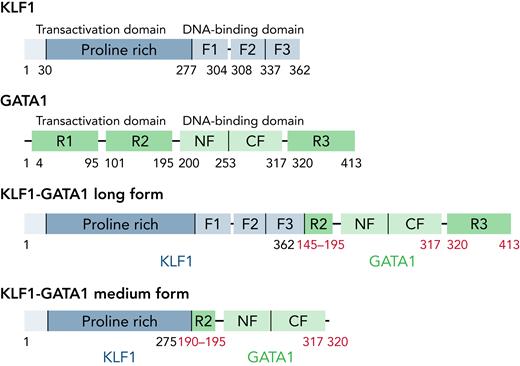In this issue of Blood, Zhu et al1 report on a novel gene therapy approach, enhancing the expression of the δ-globin chain of human minor adult hemoglobin, HbA2 (α2δ2), to treat β-hemoglobinopathies.
In adult erythroid cells, δ-globin gene expression is ∼1/40th of the β-globin of adult HbA. HbA2 functions normally as an oxygen carrier and has normal stability, but these properties are physiologically inconsequential due to the low concentration of HbA2 in adult red blood cells (RBCs).2 The δ-globin gene is transcribed at a much lower rate compared with β-globin, because its promoter lacks the KLF1-binding motif, CACCC box. It has been known for decades that HbA2 has potent anti-sickling properties, similar to HbF; this anti-sickling effect is largely due to the differences in amino acid residues between β- and δ-chains, specifically Thr87Gln and Glu22Ala in δ-chains, which inhibit deoxy-HbS polymerization by blocking lateral and axial contacts.3 It has not been possible to take advantage of this property of HbA2 because of its low level of expression (2.5%-3.0%) in RBCs. Several groups have developed approaches to activate δ-globin transcription. These have included generation of a KLF1-binding motif by creating a CACCC box in the δ-globin promoter by site-directed mutagenesis4-6; this has been tested in mouse models of β-thalassemia7 and sickle cell disease,8 with amelioration of the phenotype in both cases.
Zhu et al report an alternative approach to upregulation of δ-globin expression. They previously showed that δ-globin expression was upregulated twofold to fourfold in K562 cells and in normal bone marrow CD34+ cells by different lengths (ie, short, medium, and long) of a fusion protein between the DNA-binding domain of the erythroid transcription factor GATA1 and the trans-activating domain of KLF1.9 In the current study, the investigators extended these observations to erythroid cultures derived from CD34+ cells from sickle cell patients transduced with medium and long KLF1-GATA1 fusion constructs (see figure), as well as Berkeley SCD mice transplanted with mouse hematopoietic stem cells transduced with KLF1-GATA1 fusion constructs. The investigators observed that the fusion proteins had no impact on erythroid differentiation, proliferation, or enucleation. In CD34+ cell–derived erythroid cultures, the δ-globin expression was increased 2.3-fold by medium and 4.3-fold by long KLF1-GATA1 fusion proteins. Hypoxia-induced sickling decreased in erythroid cells derived from sickle CD34+ cell cultures. The percentage of anti-sickling hemoglobins (HbA2 + HbF) increased to 19.7% and 14.4% in erythroid cells transduced with medium and long fusions, respectively. Similar observations were made in Berk sickle cell mice transplanted with mouse hematopoietic stem cells transduced with medium and long fusion constructs. Hematologic improvement was more pronounced in mice transplanted with the medium-length KLF1-GATA1 construct (Hb 11.8 g/dL vs 6.48 g/dL in mock mice, and 7.84 g/dL in mice transplanted with the long construct), likely resulting from higher expression of HbA2 (18.8%) in this group, compared with 11.5% in mice transduced with the long fusion. In addition, there was significant improvement in the phenotype of mice transplanted with the medium-length fusion construct, including a substantial reduction in spleen size, improvement in splenic architecture, improvement in iron deposition in the liver and kidneys, and increase in urine concentrating ability.
Schematic diagram of the structure of KLF1, GATA1, and KLF1-GATA1 fusion constructs. F1, F2, and F3 represent three finger domains of KLF1; CF and NF represent C- and N-fingers of GATA1; and R1, R2, and R3 represent three regions of the transactivation domain of GATA1. See the complete Figure 1 in the article by Zhu et al that begins on page 2276.
Schematic diagram of the structure of KLF1, GATA1, and KLF1-GATA1 fusion constructs. F1, F2, and F3 represent three finger domains of KLF1; CF and NF represent C- and N-fingers of GATA1; and R1, R2, and R3 represent three regions of the transactivation domain of GATA1. See the complete Figure 1 in the article by Zhu et al that begins on page 2276.
Taken together, these data provide proof of principle that upregulation of HbA2 expression can provide significant amelioration of the phenotype in β-hemoglobinopathies by reducing the globin chain imbalance in β-thalassemia syndromes and by inhibition of deoxy HbS polymerization in sickle cell disease. The data provided are consistent with significant “disease modification,” not “cure.” The question remains whether the expression of anti-sickling hemoglobins (HbA2 + HbF) can be further increased, with pancellular distribution among RBCs, closer to a “cure.” The authors also suggest that an advantage of their approach is the use of non-myeloablative conditioning, with resultant relatively low donor chimerism, and selection of “non-sickling” cells. It remains to be seen whether this level of chimerism and HbA2 expression is sustainable long term. Nevertheless, the data presented, especially the results in Berk mice, support the consideration of a clinical trial.
Conflict-of-interest disclosure: A.K. declares no competing financial interests.


This feature is available to Subscribers Only
Sign In or Create an Account Close Modal